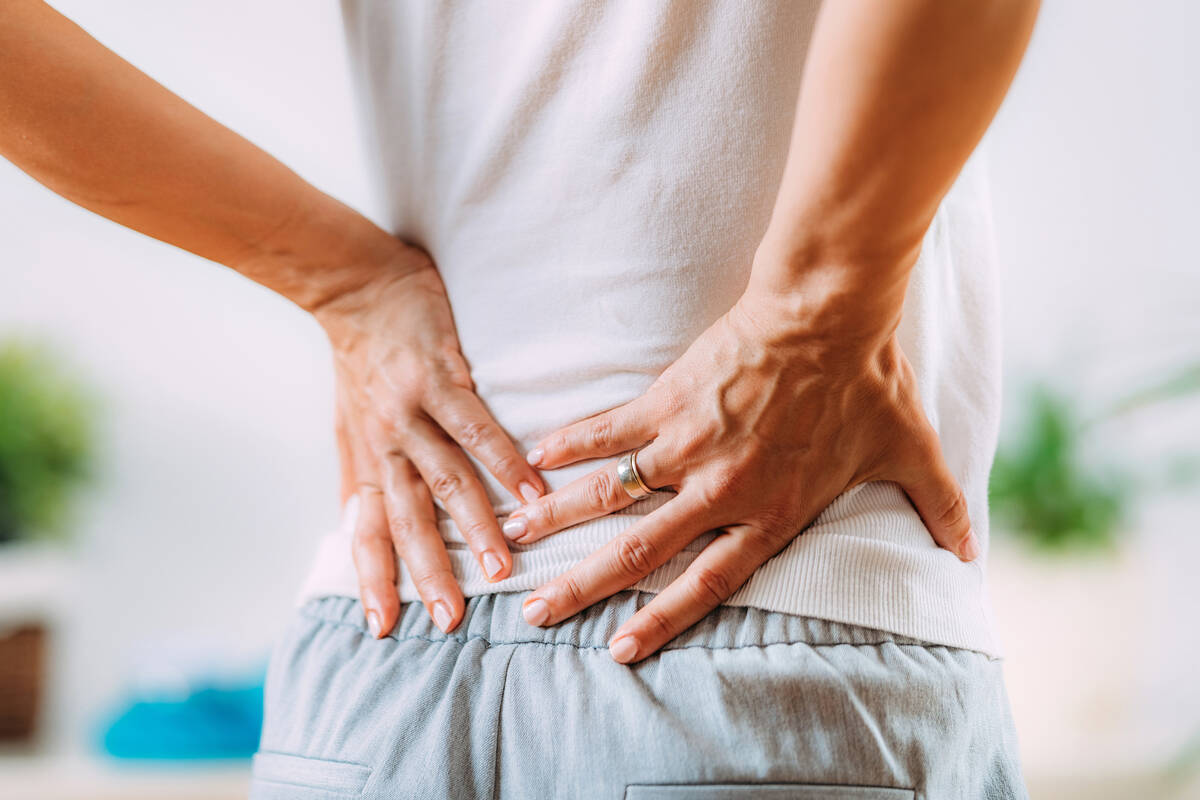When does back pain require a doctor’s care?
Question: It seems like everyone I know has some type of back pain. My husband and I both suffer from back pain, but mine is a dull ache at the end of the day, while he seems to have shooting pain. Why are our backs so susceptible to pain, and how do I know when we should talk with our doctor?
Answer: Back pain is extremely common, so you and your husband are not alone. About 80 percent of adults in the U.S. will experience low back pain at some point. Your back is made up of 30 bones stacked in a column surrounded by muscles and ligaments. Nearly every movement you make involves your back in some manner. This constant movement and support mean that your back is susceptible to strain and stress.
Not all back pain is the same, though, and symptoms can vary widely. Occasionally, a person with back pain can pinpoint the exact time it started, like when attempting to lift a heavy object or after a fall. More commonly, no specific trigger or event led to the pain.
Here are the most common causes and descriptions of back pain:
Muscle or ligament strains: Muscle or ligament strains are usually caused by a single event, such as using poor body mechanics to lift a heavy object. Strains feel like a sudden stabbing, localized pain. This pain worsens when you contract the muscle or twist. Redness, swelling and bruising can occur. The pain can be intense. Occasionally, people state that they have “thrown out” their backs. In most cases, they have a muscle or ligament strain.
Osteoarthritis: Low back pain often is caused by osteoarthritis, the most common type of arthritis. Arthritis can lead to a narrowing of the space around the spinal cord or nerve roots, a condition called spinal stenosis. It occurs most often in the low back and neck. When this occurs in the low back, the most common symptoms are pain in both legs, tingling, numbness and sometimes muscle weakness.
Bulging disk: Disks act as cushions between the bones, or vertebrae, in your spine. The material inside a disk can bulge and press on a nerve. This is called a bulging disk. Pain from a bulging disk usually occurs in the low back and radiates into the hips, buttocks or legs. It often is worse with activity and feels better when resting.
Herniated disk: A herniated disk results when a tear in the tough outer layer of a disk allows some of the inner disk material to protrude outward. Herniated disks also are called ruptured disks or slipped disks. But compared with a bulging disk, a herniated disk is more likely to cause pain because it protrudes farther and is more likely to irritate nerve roots. Depending on where the herniated disk is, it can result in pain, numbness or weakness in one or both legs. These symptoms usually affect only one side of the body.
Sciatica: Sciatica is named after the sciatic nerve, which is the largest nerve in your body. It most commonly occurs when a herniated disk, bone spur or spinal stenosis compresses part of the nerve. Sciatica is a sharp, shooting pain that runs from your low back down the side or back of your leg. Typically, sciatica affects only one side of your body.
Degenerative disk disease: As you age, the disks between your vertebrae begin to shrink and lose their softer qualities. This narrows the space between the vertebrae and can make your spine less flexible. Degenerative disk disease does not always cause symptoms. If it does, symptoms vary widely in nature and severity. Generally, pain comes and goes over a long time. It may feel better when you change positions or walk, and worsen when you sit, bend or twist.
When to schedule an appointment
Most low back pain — even when severe — goes away on its own in six to eight weeks with self-care, such as resting from heavy lifting, applying heat or ice, using over-the-counter pain medications, and stretching. Physical therapy can provide tremendous relief from back and limb pain, and oftentimes people do not need more treatment.
Talk with your health care professional if you have a history of cancer, or if your pain:
— Is constant or intense, especially at night or when you lie down.
— Spreads down one or both legs.
— Causes weakness, numbness or tingling in one or both legs.
— Occurs with a fever, swelling or redness on your back.
— Occurs with unintended weight loss.
— Occurs with new bowel or bladder control problems.
Also, if your back pain occurs after a fall or another injury, you should seek medical attention.
Dr. Kendall Snyder is a neurosurgeon with the Mayo Clinic Health System, La Crosse, Wis.


















